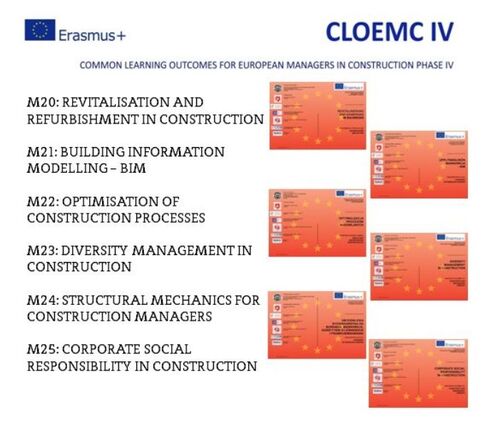Projects
Northern Buildings in Changing Climate - NoBiCC. Project No. NPA 0500141
Reykjavik University, Department of Applied Engineering, is a partner in a 3-year research program starting January 2024.
The lead partner organization is UiT, the Arctic University of Norway. Other partners are the University of Oulu, Umeå University and Nuuk Architects & Planners a/s. The associate organization in Iceland is Buseti https://www.buseti.is/english/
The main purpose of NoBiCC is to investigate the effect of changing ambient conditions for buildings in the Northern Periphery and Artic regions due to climate change.
The shifts between cold and mild during winter will become more frequent in the future, winds will most likely become stronger and flawy, and the rainfall will increase. In addition, air humidity will increase. The combination of increased wind and rain may cause extra exposure to moisture/humidity in buildings. The influence of this changes from Greenland, with its arctic climate, to Iceland and Norway, with coastal climate and Sweden and Finland, with inland climate in the north, because ambient conditions play an important role in the energy efficiency of buildings.
The program is co-funded by the European Union.
Further information is on the webpage: https://en.uit.no/project/nobicc
CLOEMC IV - Common Learning Outcomes for European Managers in Construction, part IV
ERASMUS+ Vocational Education and Training project, no. - 2015-1-PL01-KA202-016454
Partners: Reykjavík University (RU), Warsaw University of Technology (WUT), Polish Association of Building Managers (PSMB), Technical University of Darmstadt (DARM), Chartered Institute of Building (CIOB), Association of Building Surveyors and Construction Experts (AEEBC), AWBUD S.A. (AWBUD).
The main aim of the project was to extend transnational co-operation, by providing six new manuals to the Construction Managers Library. See http://www.cloemciv.il.pw.edu.pl/?lang=en for further information.
The operational goals of the project were to increase multi-cultural exchange of best practices and knowledge between Partners countries and later at EU level. Furthermore, to increase recognition of legal regulations, relevant to managerial subjects presented in manuals, at EU level and in Partners countries. Finally to facilitate proper recognition and transparency of managerial skills in construction across EU.

The project was finished in 2017. The results of the Intellectual
Outputs - the manuals of Construction Managers' Library, are freely available at the project's website:
http://www.cloemciv.il.pw.edu.pl/?lang=en
or under this direct link at WUT's
cloud:
https://chmura.il.pw.edu.pl/index.php/s/ruzzanAsCQxYhdg
Manuals from previous CLOEMC I-III
projects are available under this direct link:
https://chmura.il.pw.edu.pl/index.php/s/dcM0sils3tCd5GY
GREENBAS Sustainable Fibres from Basalt Mining
SEL research center is one of key partners in GREENBAS research project financed from NORDMIN fund. http://www.ltu.se/research/subjects/Malmgeologi/Nordmin
The project is led by Innovation Center Iceland www.nmi.is Others stakeholders are Iceland Geosurvey (ISOR), SINTEF in Norway, VTT in Finland as well as the leading mining company in Iceland, Íslenskur Jarðefnaiðnaður.
The role of Reykjavik University in the programme is to add knowledge in the sector of concrete structures reinforced with basalt fibre bars and with basalt fibre sheets.
Sustainable Water and Energy Management in Environmental Engineering (NORDSWEM2014)
The Nordplus-network “Sustainable Water and Energy Management in Environmental Engineering” (NORDSWEM) will develop, create and design new ways to approach climate change issues.
The energy issues related to alternative technologies will be promoted during the project. See http://nordswem2014.webs.com/ for further information.
Distance learning within management in construction
Financed by: EEA Scholarship and Training fund, grant no.: FSS_2013_IIC_W_0015
Partners: Warsaw University of Technology, Reykjavik Univerisity, Norwegian University of Science and Technology
Operational goal of the project is to facilitate qualifications of construction personnel managing construction infrastructure projects.
The project is based on Manuals which were created during the LdV project No. 2009-1-PL1-LEO05-05016, pt. ”Common Learning Outcome for European Managers in Construction” finished in 2011.
In this project innovative distance learning courses will be created on a MOODLE platform in the area of Risk and Value Management in Construction. The project focuses primarily on the continuing education of the personnel of small and medium construction companies as well as personnel of central and local administration supervising construction projects. But the teaching material developed should also be applicable for university programs in construction management. Courses will be recognised by the Partners Universities.
See http://fss.il.pw.edu.pl/ for further information.
Nordic Built – Nordic Urban Development - making stakeholders "walk the talk"
A collaboration project involving Green Building Councils, cities, universities and companies within the Nordic countries.
The aim of the project is to develop a framework for sustainable urban development for the five Nordic countries of Iceland, Norway, Sweden, Denmark and Finland. The framework will include a joint vision and definition of sustainable urban development, shared goals, indicators and methods to track progress and results, and examples of measures to achieve project objectives. The framework will drive continued development by fostering engagement and positive collaboration around sustainable urban development between Nordic cities, companies and academia.
Wind and vibration measurements on the Lysefjord Bridge
Partners: University of Stavanger (UiS) and Reykjavik University (RU)
Financed by: Norwegian Public Road Administration (NPRA), UiS, RU and Norcowe.
The objective of the project is gain more insight into the bridge behaviour and response to wind and traffic induced vibration. The aim is to improve the load and response evaluation for suspension bridges.
For this purpose a thorough assessment of turbulent flow characteristics as well as the dynamic response of the bridge is required. Therefore seven ultrasonic anemometers have been installed along the bridge deck to characterize the turbulent flow field affecting the bridge, which is essential for validation of computational models for wind-induced bridge vibrations. In addition six tri-axial accelerometers have been installed in the bridge deck and two in one of the bridge towers to record wind and traffic induced vibrations.
This measurement campaign will increase expertise in structural health monitoring and spur off further research that may be vital for the Coastal Highway E39 project, which aims to provide ferry-free route between Stavanger and Bergen.
See more:
- http://www.uis.no/forskning/nytt-fra-forskningen/forskere-fanger-vinden-article81801-8389.html
- www.ru.is/forsiduflokkar/nr/30269
- http://issuu.com/hr.is/docs/hr_timarit_web
- http://www.vfi.is/1-tlb-2014/frettabref/greinar/nr/3410
Monitoring of Reservoirs and Dams
The research is on monitoring of hydropower plants, especially reservoirs and dams. This includes both monitoring of individual dams and monitoring of geophysical aspects, such as movement of faults and induced earthquake activity. The monitoring of the Kárahnjúkar hydropower plant will be used as a case study focusing on the monitoring of the Hálslón reservoir and the dams retaining it. Statistical methods will be used to analyze monitoring data and formulating a statistical prediction model to monitor the behavior and evaluate the performance of the dams.
This project is partly funded by Landsvirkjun Energy Research Fund and from Iceland Catastrophe Fund.
Seismic action on low-rise concrete shear wall buildings on flexible foundation
The objective of this project is to develop a robust efficient and reliable simplified method for the structural design of low- to medium-rise concrete shear wall buildings in earthquake prone areas and thereby to improve the current state-of-the-art in structural design for earthquake action. The main focus is on strong-motion prediction models, emphasising response of concrete structures on soil foundation, including “the Icelandic gravel cushion foundation”. The research are done in collaboration with Earthquake Engineering Research Center. Read more here.
Linudans - Research and development of high voltage towers
Reykjavik University is working in collaboration with Linudans, research based company specialized in the field  of electricity infrastructure. The aim of the company is to develop environmentally friendly solutions to the existing and future problems regarding the growing energy transport. All products of Linudans are green and environmentally responsive. Linudans seek to combine ideally advanced engineering solutions, qualitative aesthetics and economically efficient production methods. The project is financed from RANNIS, The Technology Development Fund. Read more here. See Linudans on Facebook.
of electricity infrastructure. The aim of the company is to develop environmentally friendly solutions to the existing and future problems regarding the growing energy transport. All products of Linudans are green and environmentally responsive. Linudans seek to combine ideally advanced engineering solutions, qualitative aesthetics and economically efficient production methods. The project is financed from RANNIS, The Technology Development Fund. Read more here. See Linudans on Facebook.
Basalt bars and basalt mats for use in concrete structures
Research program is ongoing at SEL to test basalt bars and basalt mats (BFRP) for strengthen concrete structures. The research are done in collaboration with Innovation Center Iceland and financed from RANNIS, The Technology Development Fund. The basalt products use in this research are manufactured and sponsored from BASALTTEX and MagmaTech. Read more here.
Reinforcement of glulam beams with basalt- and glass fibre sheets
The main focus of the research is to investigate the reinforcement of glulam beams with fibre reinforced polymers (FRP) and to compare to calculated predictions for strengthened beams. Today there has not been issued a standard code for the reinforcement of glulam beams with FRP, so this research step in future development of strengthened glulam beams. The research is funded by Housing Finanching Fund. The glulam beams are produced and sponsored from LimtreVirnet. Others collaboration companies are INFUSE and BASALTEX. Read more here.
Elastic properties of Icelandic concrete
The scope of this project is the elastic properties of Icelandic concrete. The main focus is on determining the modulus of elasticity (Young‘s modulus) and Poisson‘s ratio. Recent preliminary research in this field suggests that current information on the modulus of elasticity need to be researched further. The research work is done in collaboration with Mannvit Testing & Research Lab.
The project is funded by Housing Finanching Fund and by the Icelandic Road Administration research fund. Read more here.

